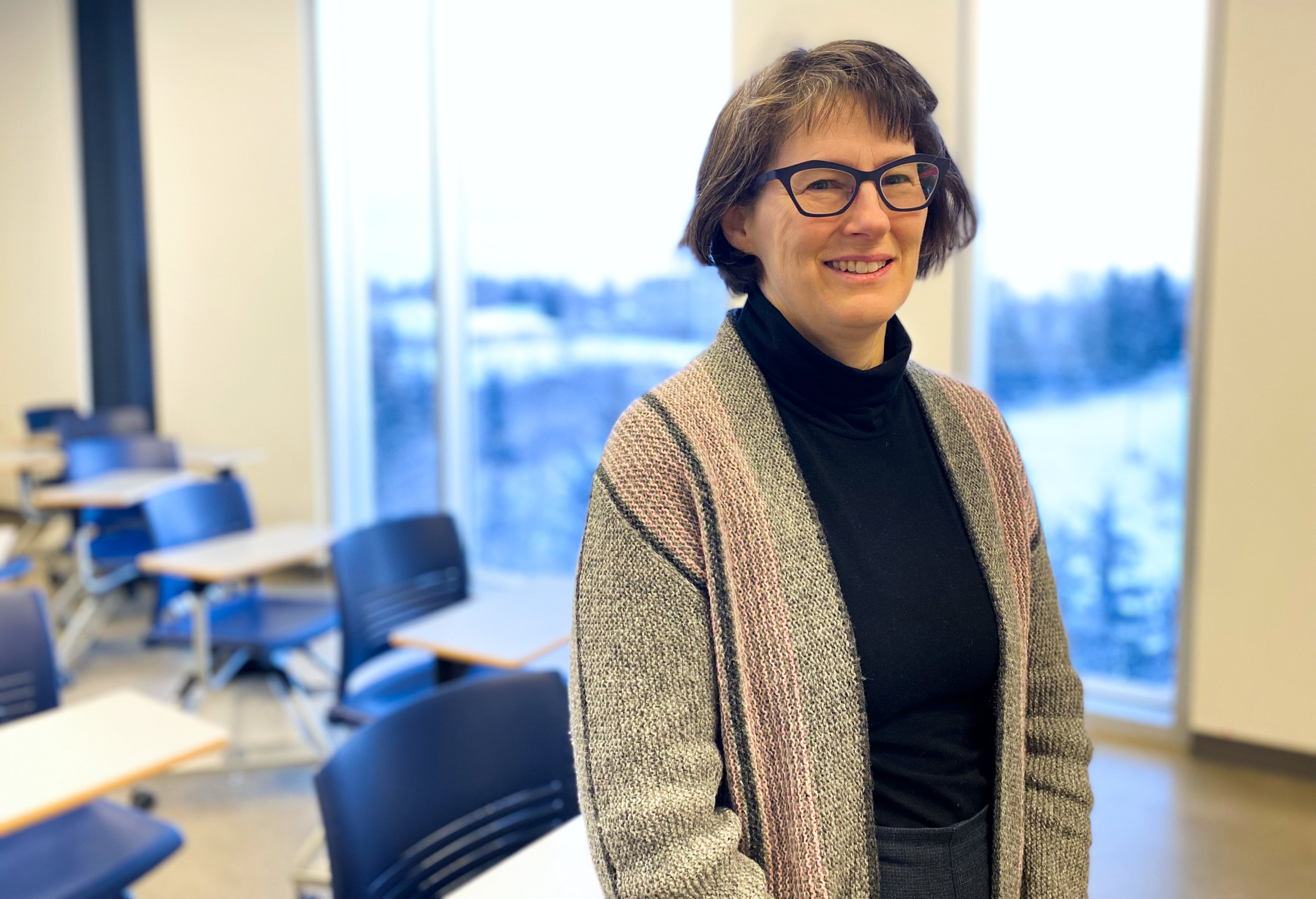Working as a summer student years ago, Paula Marentette was eager to help when her boss handed her an extra assignment to analyze some data, looking for trends. Bolstered by two years of university statistics courses, Marentette felt confident she could help.
But when she got down to work, her heart sank.
“I opened the dataset and didn’t know where to start,” the University of Alberta psychology professor recalls now.
“I was a great statistics student, but what I hadn’t been taught was how to apply my knowledge in an unspecified problem. Most problems given in the classroom are clear-cut; the task is to apply a specific test to a specific set of data. But I didn’t know how to take a dataset without preset questions and figure out what to do with it.
“What I faced in this workplace, where I would have loved to have helped them, was that I didn’t know how to explore this data for the interesting story it could tell.”
Drilling down to the data that matter
Thirty years later, Marentette discovered first-year social sciences students bumping into the same issue in her Augustana Campus classes, so she developed a new course that flips the equation.
Piloted in 2022 and returning this month, the Introductory Applied Statistics course has students learning how to address real-world problems by analyzing existing datasets, instead of memorizing formulas and learning how to manually calculate statistics from preset problems.
The strategy challenges students to become critical thinkers in a world “awash in data,” Marentette says.
“Even if you just get your news through social media, people are throwing data at you as evidence to support their version of the world. As university-educated people, we should have the capacity to think critically about that, and not take all statistics at face value.”
Instead of putting the emphasis on calculating statistics manually, the course has students work in groups to pick a real-world problem they are interested in. They choose the variables they are curious about, then explore their questions using large datasets of existing research available through University of Alberta Libraries.
The process propels the students to think about the most effective ways to analyze the data they see, Marentette says.
“Now the job of a human brain kicks in, where we take the focus off the calculation to get a number, and move it to interpretation. Did the students choose an appropriate test for the data? Is it valid? And if it is, what is the story the data tells?
“The decision the students make every week in the course influences the interpretation they give the dataset. That’s critical, because they then understand that the number at the end is not a black-and-white truth, but the result of a series of decisions.”
It helps students understand that a statistical result is complex, “and evaluate the quality of data that went into it,” she adds.
Honing essential workplace skills
Knowing how to research and explain statistical data is an essential skill the students can carry into their workplaces, Marentette notes.
“The course teaches students how to find specific information. If your boss comes in and says, ‘This just happened and we need to know if it has happened in any other businesses like ours,’ you should be able to find and then provide the best quality, relevant information. And you have to be able to say what those figures mean.”
Learning to work with others in a group also transfers into a career skill, she adds.
“Being an effective collaborator means you have to figure out how to work with people you wouldn’t choose to work with. If you’re a newbie on the job, you don’t get to pick.”
The course, which Marentette is continuing to refine, also equips the students with skills that help them interpret academic papers they have to read for their other classes, and gives them “concrete skills” for a problem-solving course compulsory for third-year Augustana students, she adds.
Her course’s non-traditional approach to data analysis will give Augustana students, as members of a liberal arts and sciences campus, a deeper understanding of their value to employers, Marentette believes.
“Courses like this help them understand that this kind of critical, complex thinking and problem-solving is what a university graduate brings to the workplace.”
